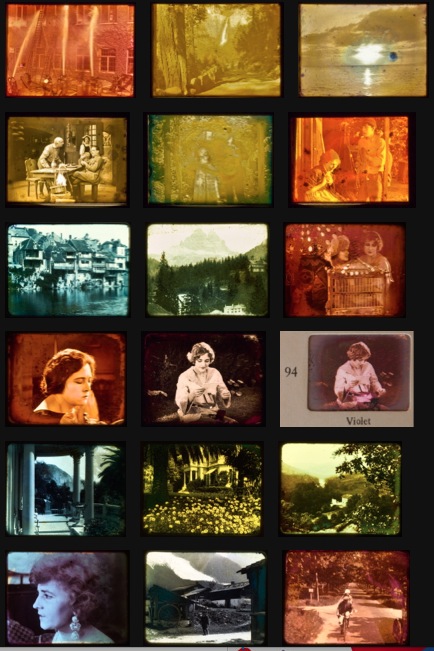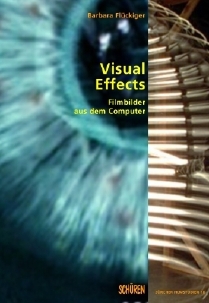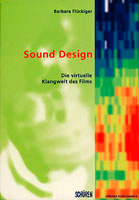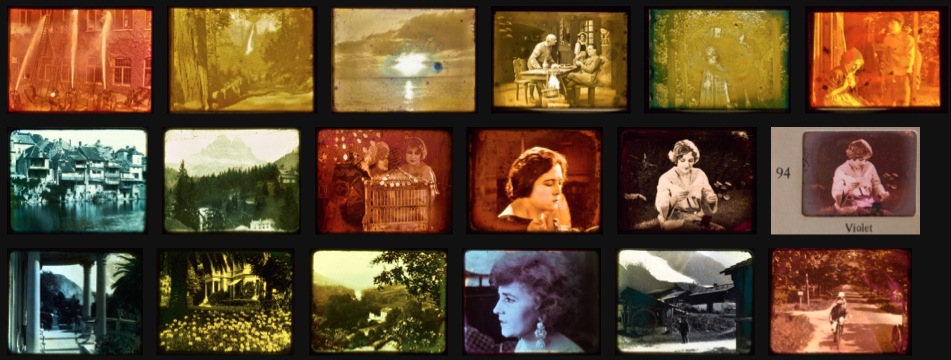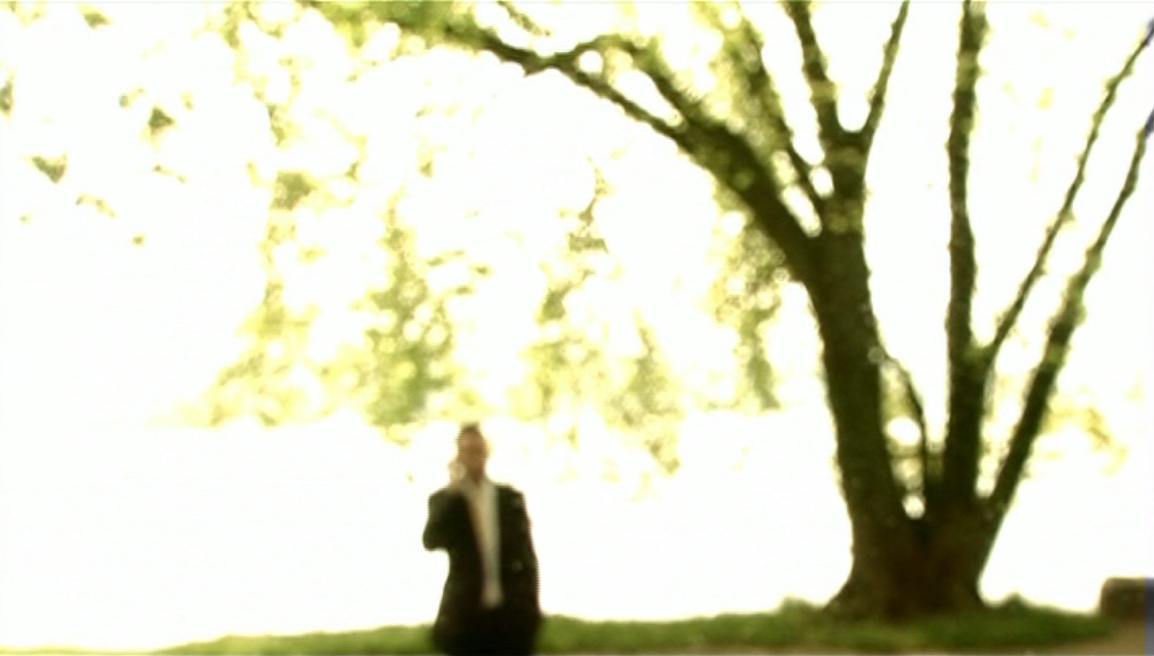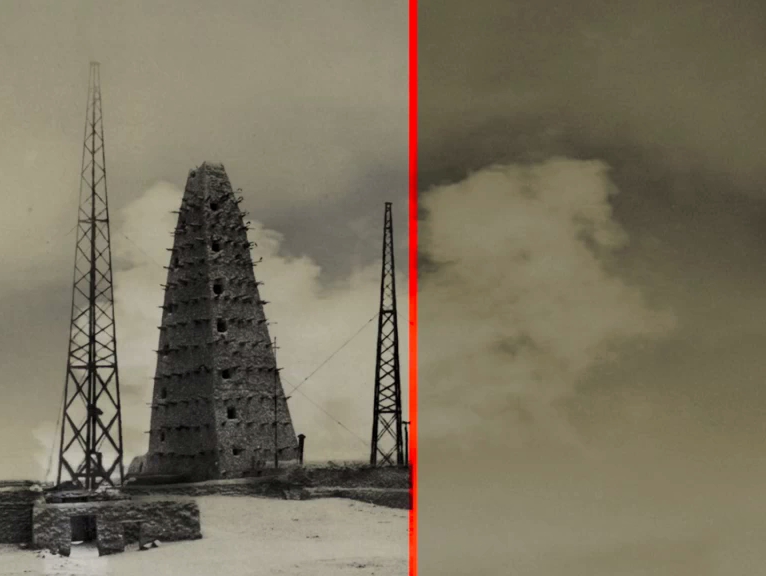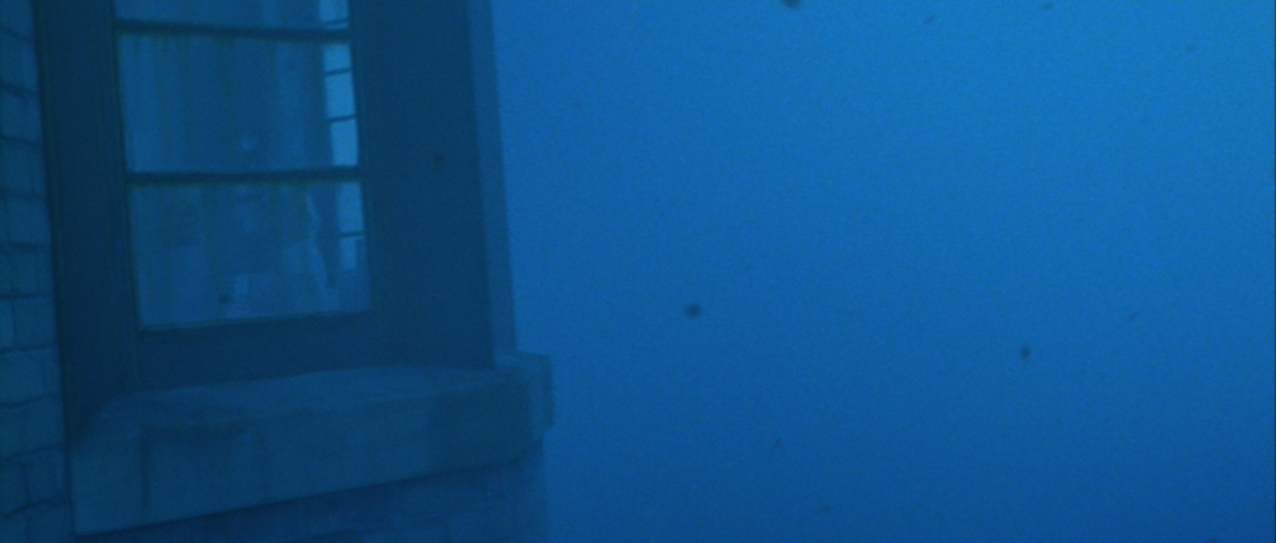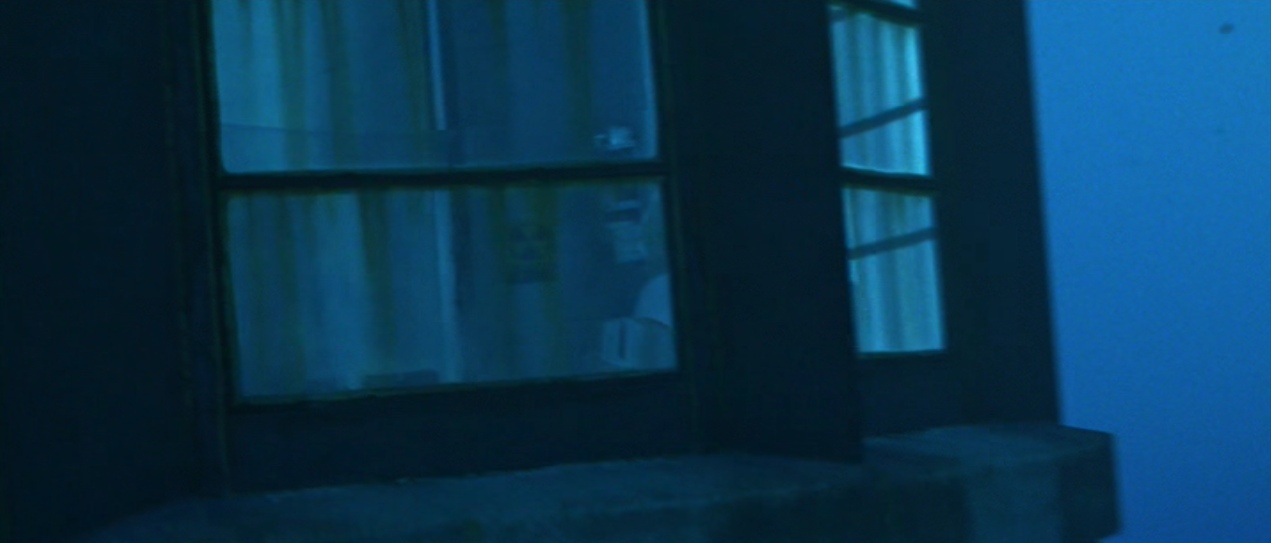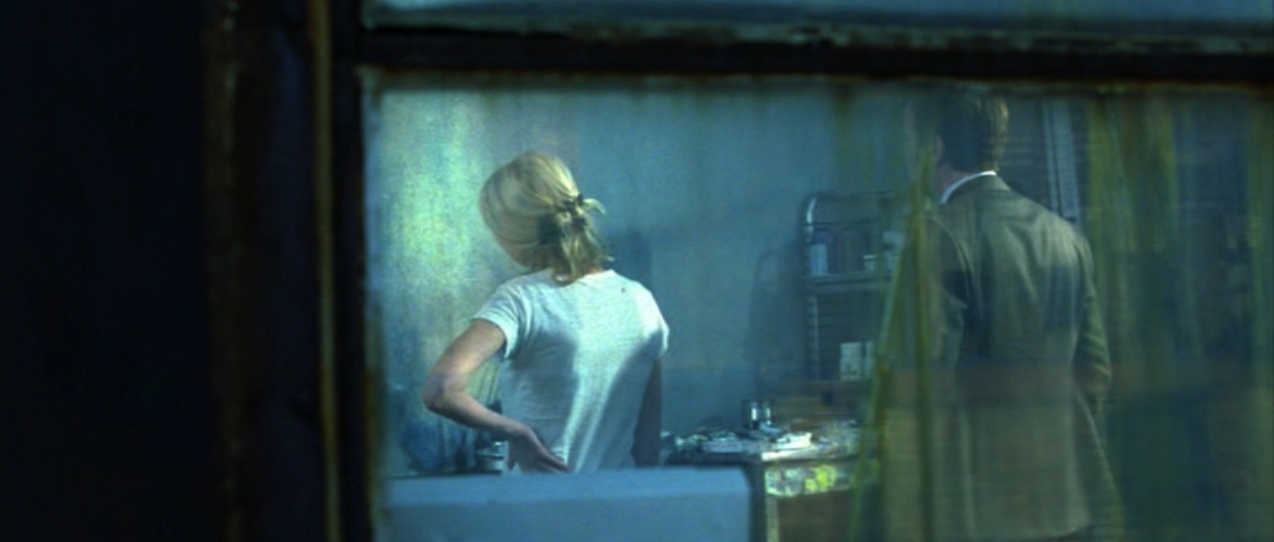Resources
published, collected or compiled by Barbara Flueckiger
Film Color | Visual Effects and Digital Cinema | Film Aesthetics | Archival Film |
Sound and Sound Design |
Color
Timeline of Historical Film Colors (2012 ff.)
--> LinkOne of the most pressing topics in the conversion of film into the digital domain is the perception and transformation of film colors as a result of their digitization.
To investigate this topic, in 2012 the author set up a database of historical film colors to document the various processes that have emerged in the course of film history. It is published online as a timeline that connects historical and bibliographical information with primary resources from several hundred original papers and secondary sources and more than 5,000 photographs from vintage prints taken at archives from all over the world.
This database is conceived to provide an interactive platform to gather and connect detailed information on each of these processes as well as illustrations, filmographies, and downloads of seminal texts.
In the framework of the research project ERC Advanced Grant FilmColors it will be supported by a system for the computer-assisted analysis of film colors in a digital humanities 2.0 tradition with collaboration among scholars on a global scale. Barbara Flueckiger has reflected the methodological and epistemological foundations of this endeavor in my article "Die Vermessung ästhetischer Erscheinungen" (The Measurement of Aesthetic Phenomena) in the peer-reviewed journal Zeitschrift für Medienwissenschaft, no. 5 (2/2011), pp. 44-60, in German; see paragraph "Aesthetics".
“Color and Subjectivity in Film” (2016)
--> Download PDF In: Maike Sarah Reinerth and Jan-Noël Thon (eds.): Subjectivity across Media. Interdisciplinary and Transmedial Perspectives, New York: Routledge, pp. 145–161.Discusses subjective and affective dimensions of color in film.
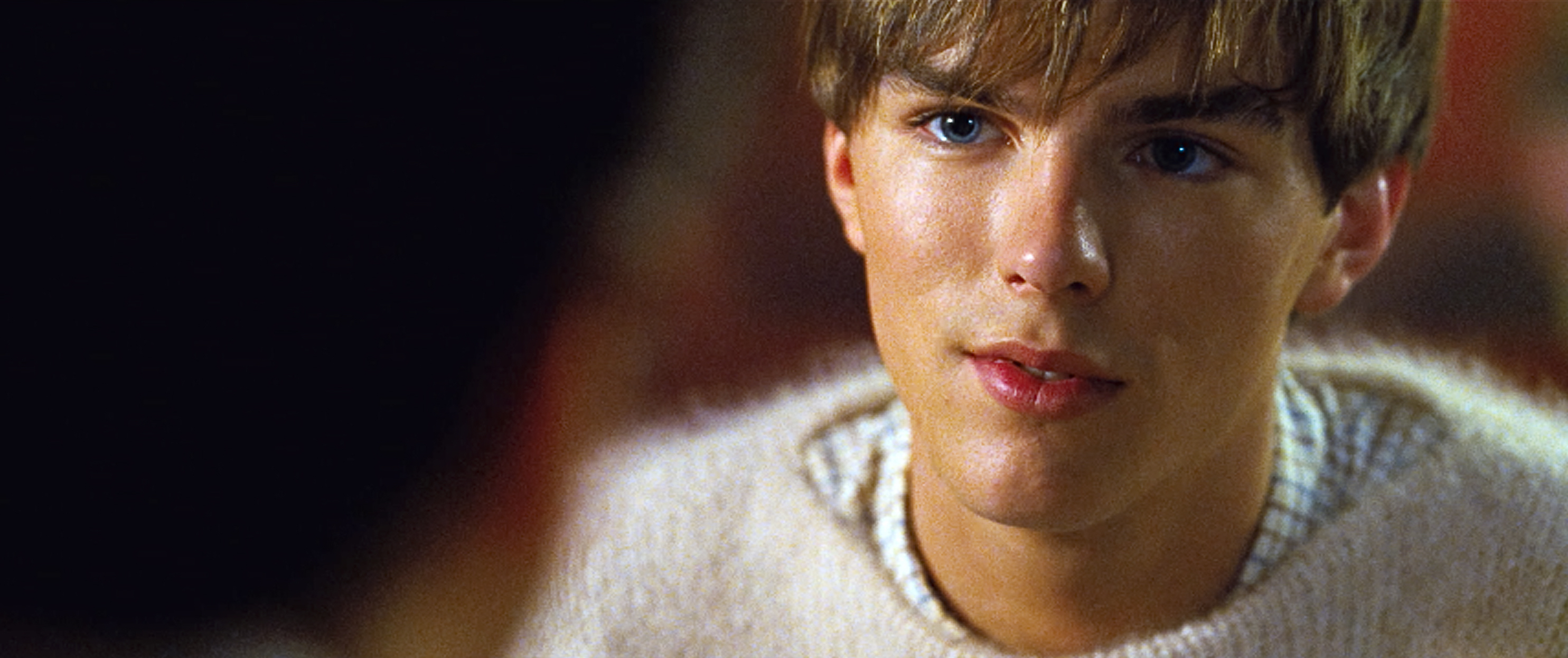
"A Digital Humanities Approach to Film Colors". (2017)
--> Download PDF In: The Moving Image, 17.2, pp. 71–94. [preprint version, see printed version online]Presents current methods and approaches to the (semi-)automatic analysis of film colors.
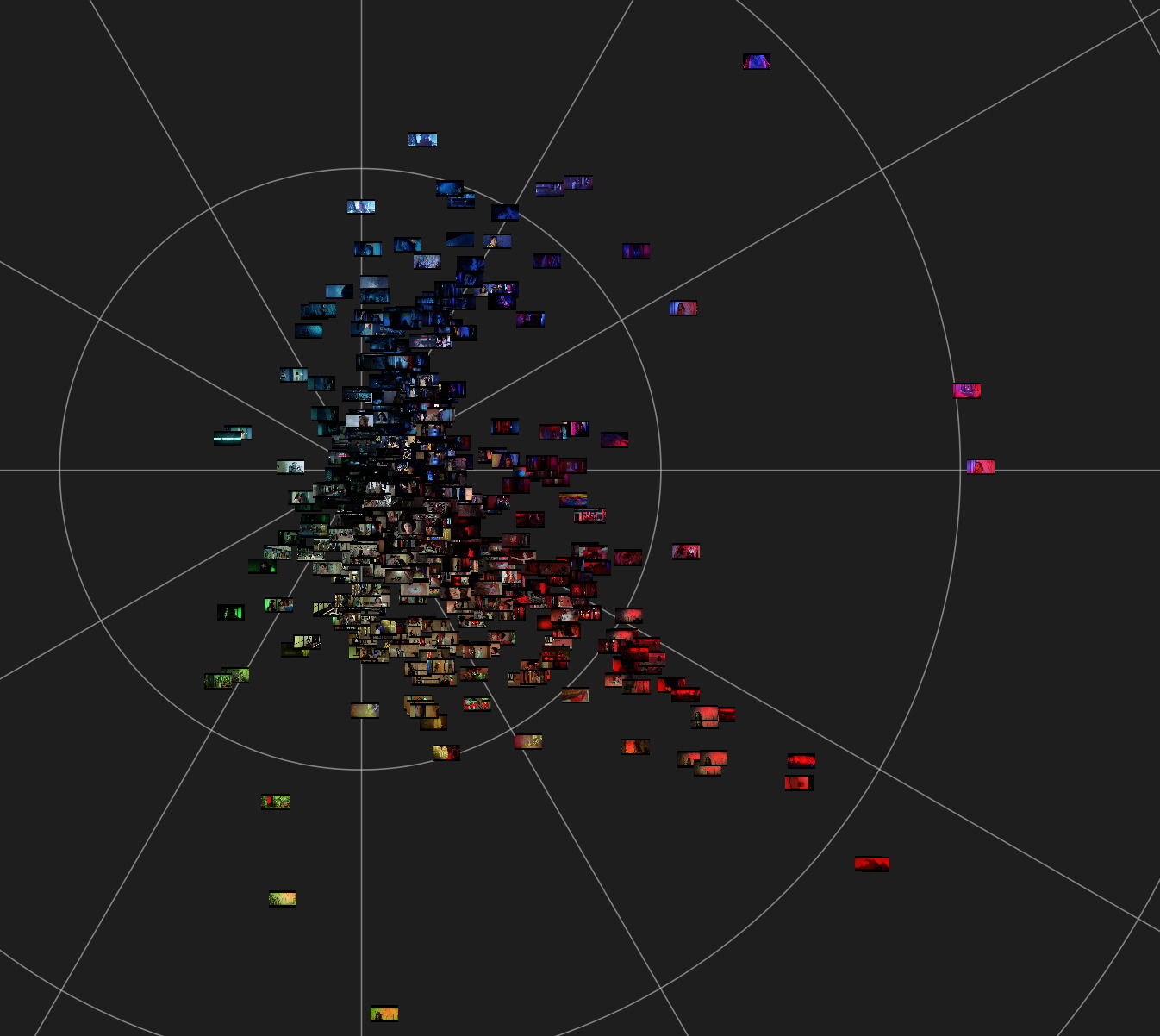
"Zwischen Chromophobie und Farbrausch. Entwicklungslinien des frühen Technicolor" (2015).
--> Download PDF (in German)Originally published in: Connie Betz, Annike Schaefer and Rainer Rother (eds.): Glorious Technicolor. Berlin: Bertz und Fischer, pp. 21–47. Updated English translation "Torn between Chromophobia and Colour Mania. Developments of Early Technicolor". In: Colour Turn, 1,1, Aug., pp. VI–1–VI–36. online]
Technology, Economy, and Aesthetics of Early Technicolor, see Technicolor entries on the Timeline of Historical Film Colors: Technicolor No. II Technicolor No. III.
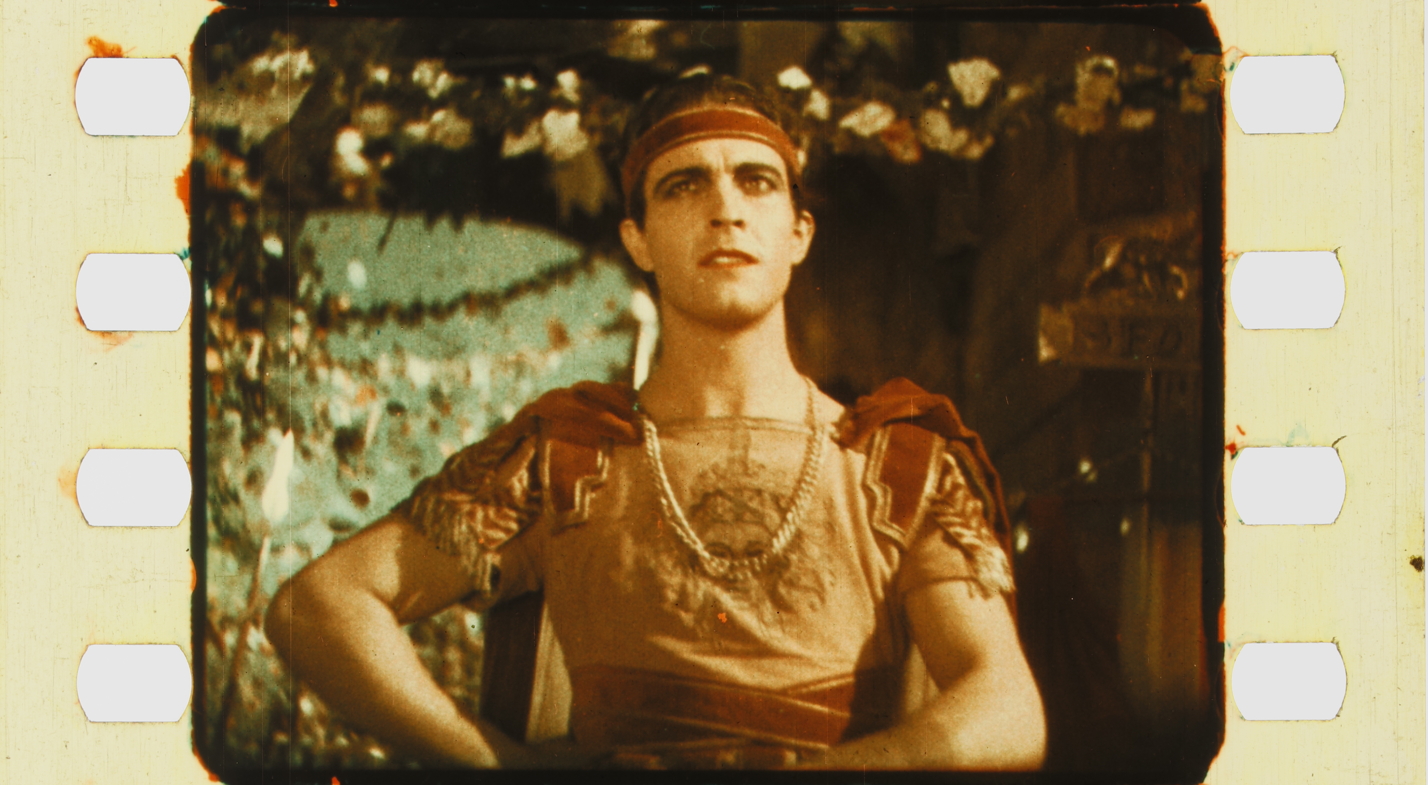
Visual Effects and Digital Cinema
“Städtebilder aus dem Computer” (2009)
--> Download PDF, in GermanAn illustrated article on different technical and aesthetic strategies to display computer-generated cityscapes in film.
Timeline “History of Visual Effects VFX, Computer Graphics, CGI, Computer Animation”(2009)
--> LinkDatabase on the history of inventions in the domain of visual effects, computer-generated imagery, special effects, and computer animation, with approximately 360 entries, sortable and searchable. Contains information collected within the framework of the research project on visual effects, supported by a grant from Swiss National Science Foundation.
“Digital Bodies” (2010)
--> Download PDFEnglish translation of the chapter "Digital Characters" from my book Visual Effects. "Digital Bodies" is an extract of Barbara Flueckiger's study of computer-generated images in film and explores the creation and role of digital characters in live-action movies. The text starts with an historical overview. Furthermore it investigates fundamental problems of digital character construction, namely problems of character consistency, the modeling of complexity and the interaction of digital characters with live-action protagonists. And finally it illustrates the interrelations between aesthetic, narrative, and emotional aspects of these characters and the audience's response to them.
“Computer-Generated Characters in Benjamin Button and Avatar” (2011)
--> Download PDFEnglish translation of Barbara Flueckiger (2011): "Zur digitalen Animation von Kõrpern in Benjamin Button und Avatar." In: Harro Segeberg (ed.): Digitalität und Kino. Munich: Fink.
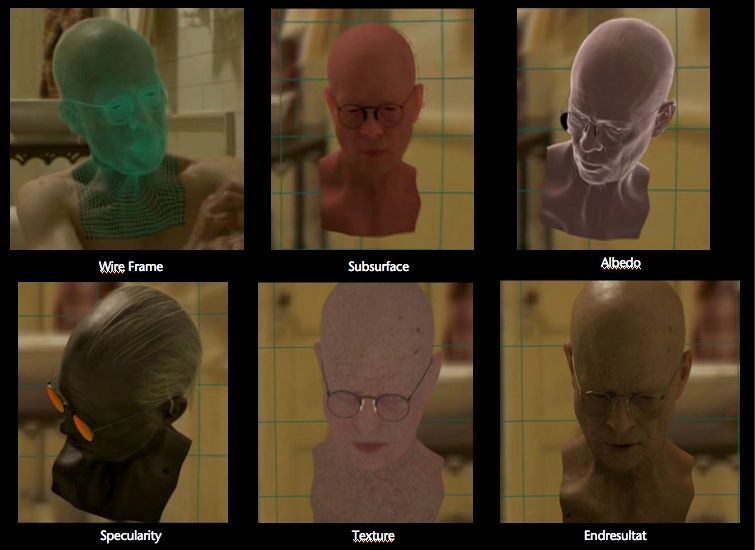
“‘Liquid Selves’. Zur Transformation von Körpern” (2011) (“‘Liquid Selves’. Transformation of Bodies”)
--> Download PDF, in German.Originally published in: Franziska Bruckner, Melanie Letschnig, Georg Vogt (eds.): Techniken der Metamorphose. Positionen zum Animationsfilm (Techniques of Metamorphosis) (= Maske & Kothurn. Internationale Beiträge zur Theater-, Film- und Medienwissenschaft, Vol. 56, No. 4). Vienna: Böhlau, pp. 23–37, in German."
Links Collection “Visual Effects” (2009)
--> LinkCompanies, education, associations, festivals and conferences, information and downloads, color, history.
“Das digitale Kino. Eine Momentaufnahme” (2003)
--> Download (scan PDF, German)The paper presents results from the research project “Digital Cinema”, in collaboration with the Imaging and Media Lab of the University of Basel, the Graphics Lab of the Swiss Federal Institute of Technology in Lausanne, Sony Overseas SA and other academic and industrial partners, supported by a grant from the Swiss Confederation's Innovation Promotion Agency CTI. Originally published 2003 in: Montage/av 12:1, pp. 28-51. Also published in: Marille Hahne (ed.): Das digitale Kino. Marburg: Schüren, 2005, in German.
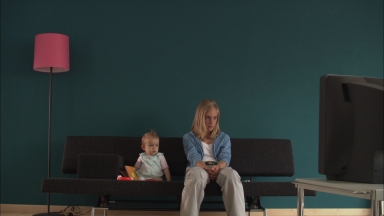
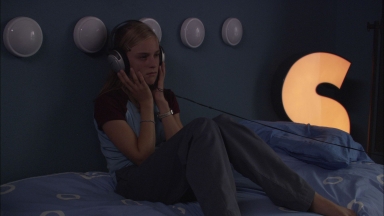
“Digitales Kino CH. Eine revidierte Momentaufnahme” (2006) (Digital Cinema CH. A Revised Snapshot of the State-of-the-Art)
--> Download (scan PDF, German)The paper elaborates results from the research project “Digital Cinema”. Based on an inquiry with producers, cinematographers and directors on 74 contemporary films it presents the developments in digital filmmaking. Originally published 2008 in: Alain Boillat, Philipp Brunner and Barbara Flueckiger (eds.): Kino CH / Cinéma CH. Rezeption, Ästhetik, Geschichte / Réception, esthétique, histoire. Marburg: Schüren, pp. 185-202, publisher's website
Film Aesthetics
“Materialmix als ästhetisches und expressives Konzept” (2012).
--> Download PDF (in German) Published in: Margrit Tröhler, Jörg Schweinitz and Philipp Brunner (eds.): Filmische Atmosphären, Marburg: Schüren, pp. 73–90. /p>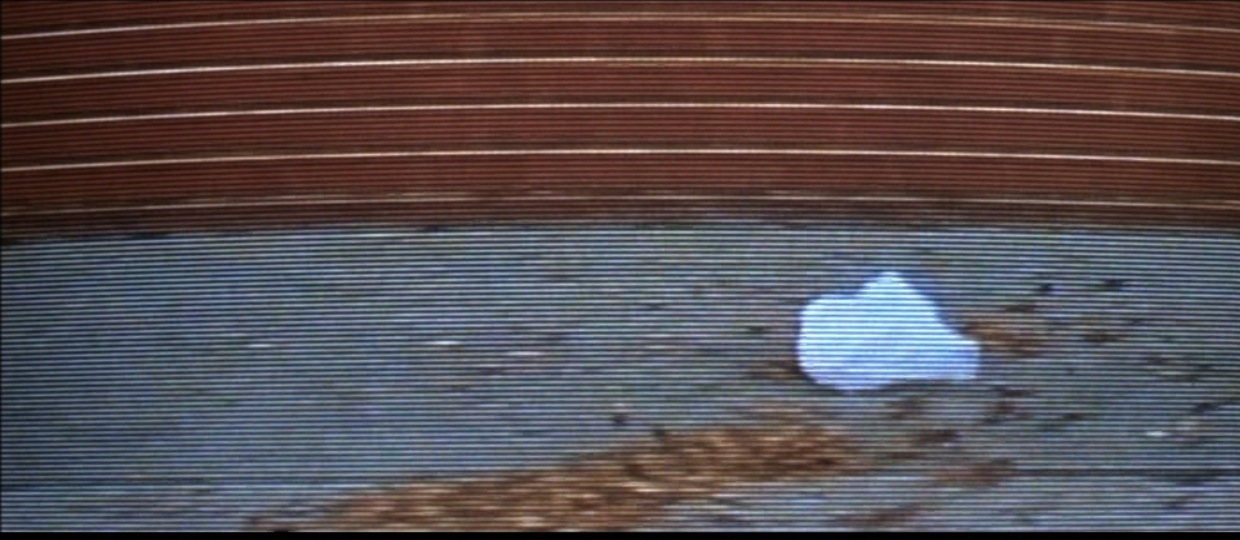
“Rides und entkörperlichte Kamerabewegungen. Zum Verhältnis von Filmstil und Filmtechnologie” (2016)
--> Download PDF (in German) Published in: Julian Blunk; Tina Kaiser; Dietmar Kammerer; Chris Wahl (Hg.): Filmstil. Perspektivierungen eines Begriffs. München: edition text + kritik, S. 211–235.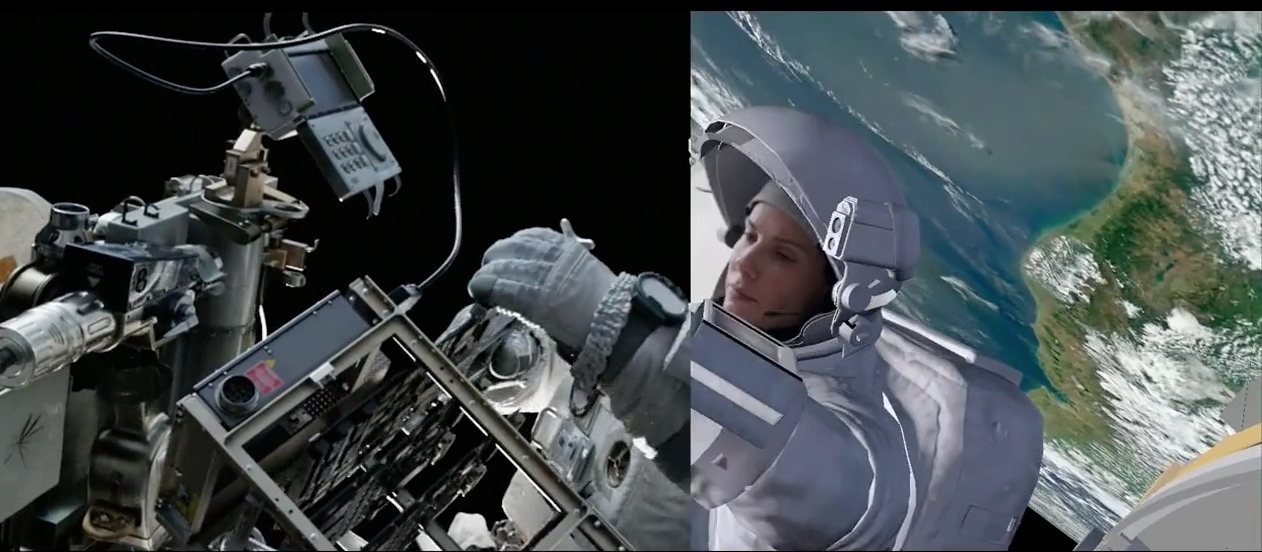
“Die französische Nouvelle Vague” (2016)
--> Download PDF (in German) Published in: Thomas Christen (Hg.): Vom Neorealismus bis zu den Neuen Wellen. Filmische Erneuerungsbewegungen 1945-1968. Marburg: Schüren Verlag, S. 178–202.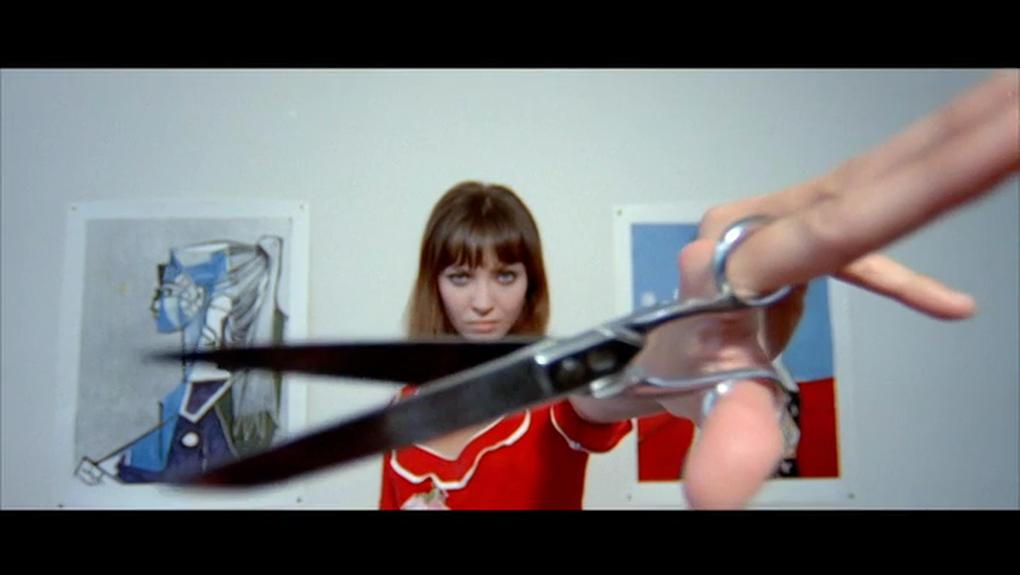
“Die Vermessung ästhetischer Erscheinungen” (2011)
--> Link to download (PDF, in German) In: Published in Zeitschrift für Medienwissenschaft, No. 5 (2/2011), pp. 44-60. (October 2011)Similar to art history, film studies has long focused on canonical works by important filmmakers in order to trace formal developments in film. Being a serially produced art form, film demands to be studied along the lines of what art historian George Kubler called a “cultural sequence", i.e. an existing chronology of relatively stable but marginally varying solutions for a given aesthetic problem. Using the example of color in film as its point of departure, this article shows how newly developed processes of computer-based film analysis open up the possibility of a serial analysis of large data sets, thereby opening up a new field of empirical research into the aesthetics of film form.
“Lifestyle, aesthetics and narrative in luxury domain advertising” (2009) --> Download PDF
This study investigates a pattern observed in recent lifestyle advertisements. In the domain of luxury goods a certain type of advertisement has emerged that relies almost exclusively on the evocation of pure sensation. Only in part do the depicted scenes, characters or objects trigger these sensations. Rather, aesthetic features of style - such as depth of field, diffusion, colour or light - enhance the spectator's sensorial response. In the context of the avant-garde of the 1920s, similar strategies were employed. While these avant-garde films combined a modernist hope for utopia with a democratisation of aesthetics and taste for the masses, contemporary lifestyle advertisements tend to be suffused with nostalgia. However, this nostalgia is ahistoric, offering only the most pleasurable aspects of an imaginary experience.
Originally published in: Steve Spittle (ed.): Advertising as Narrative Form, Special Issue of Popular Narrative Media, 2.2, pp. 195-212
This study investigates a pattern observed in recent lifestyle advertisements. In the domain of luxury goods a certain type of advertisement has emerged that relies almost exclusively on the evocation of pure sensation. Only in part do the depicted scenes, characters or objects trigger these sensations. Rather, aesthetic features of style - such as depth of field, diffusion, colour or light - enhance the spectator's sensorial response. In the context of the avant-garde of the 1920s, similar strategies were employed. While these avant-garde films combined a modernist hope for utopia with a democratisation of aesthetics and taste for the masses, contemporary lifestyle advertisements tend to be suffused with nostalgia. However, this nostalgia is ahistoric, offering only the most pleasurable aspects of an imaginary experience.
Originally published in: Steve Spittle (ed.): Advertising as Narrative Form, Special Issue of Popular Narrative Media, 2.2, pp. 195-212
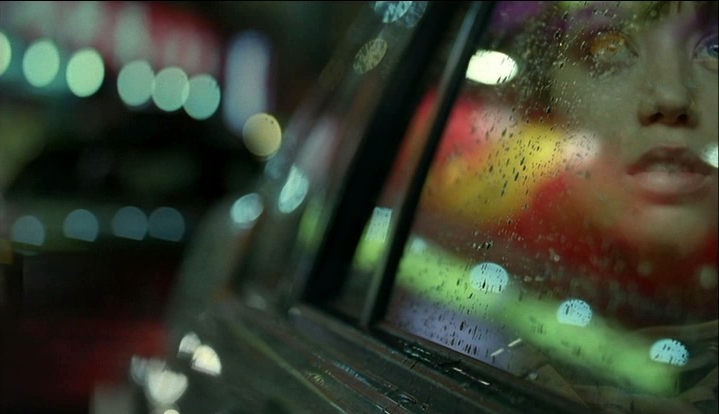
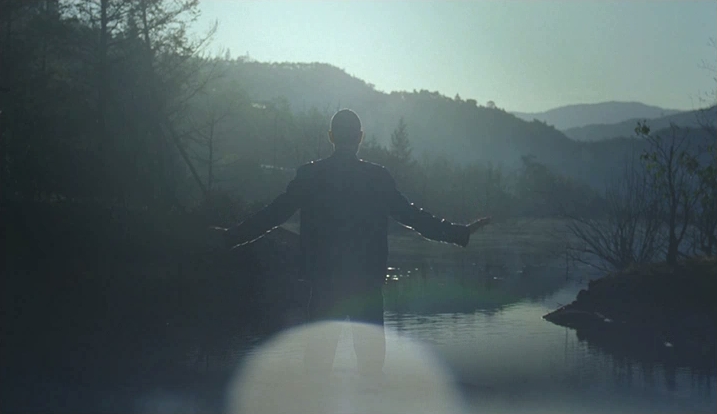
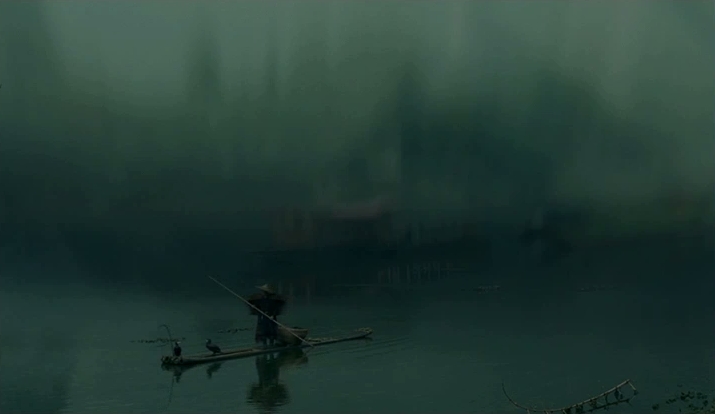
“Assoziative Montage und das ästhetische System von Stay” (2011) (“Associative Montage and the Aesthetic System in Stay”)
--> Download PDF (in German). Published in: montage/av, No. 1/2011, pp. 133-148.
Archival Film
Annotated Bibliography “Digitization of Archival Film” (2008)
--> LinkCompiled in collaboration with Dr. Franziska Heller, Institute of Cinema Studies, University of Zurich, within the framework of the research project AFRESA, funded by a grant from the Swiss Confederation's Innovation Promotion Agency CTI in collaboration with the Imaging and Media Lab of the University of Basel, the companies Swiss Effects Film GmbH and Sondor.
Sound and Sound Design
S. de Serk (1914): “Les Bruits de coulisses au cinéma”
--> Download (scan PDF, French)A historical manual for 'Foley artists', long before the term was even coined.
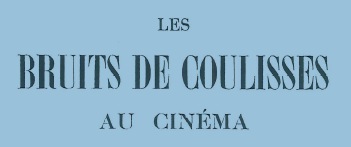
“The Unidentified Sound Object” (2002)
--> Download PDF, EnglishExtract from the book Sound Design. Die virtuelle Klangwelt des Films

“Sound Effects. Strategies for Sound Effects in Film” (2009)
--> Download PDF, EnglishAn introduction to functions of sound effects in film.
Article originally published in Sound and Music in Film and Visual Media: A Critical Overview, edited by Graeme Harper, Ruth Doughty and Jochen Eisentraut, 2009. Permission given by the Continuum International Publishing Group.
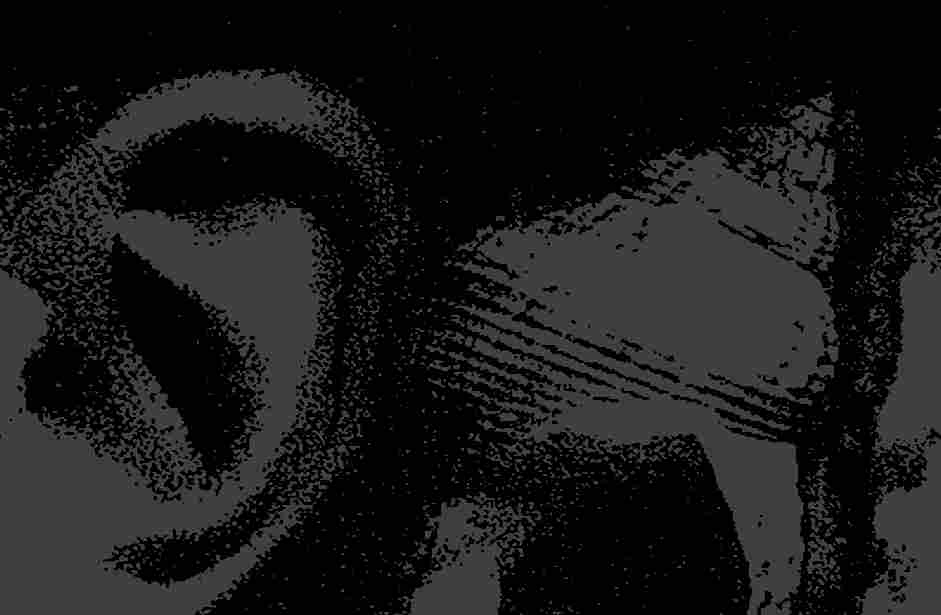
Last update October 30, 2018, to be continued...
